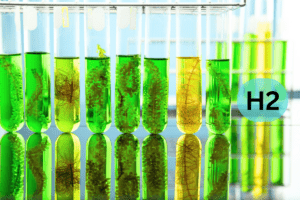PV panellerinin verimliliğini artırmak ve daha uzun süre dayanmalarını sağlamak için araştırmacılar farklı yaklaşımlar deniyorlar. Son zamanlarda Fraunhofer ISE, yeni bir yaklaşımla geliştirilen %31.6 verimli güneş hücresini piyasaya sürüyor. Almanya'nın Fraunhofer Güneş Enerjisi Sistemleri Enstitüsü…
Güneş panellerine olan talebin artmasıyla birlikte, bunlar için muazzam bir atık üretimi oldu. Şirketler eski panelleri ekonomik ve sürdürülebilir bir şekilde geri dönüştürmek için yöntemler deniyorlar.…
'Ağaç Dik' sözünü sık sık duyar ve okuruz, ancak çok azımız buna dikkat eder…
Yaygın sorunlar, atık suların izlenmesi ve atık suların salınımının durdurulması için bertaraf yöntemlerinin uygulanmasıyla ele alınabilir.
Cahil görünebiliriz ama bir yerlerde evimiz olan gezegenimizle ilgili endişelerimiz var. Birçoğumuz…
Kaçırmayın!
Bültenimiz
FooBar'dan sanat, tasarım, politika ve iş dünyasına dair en son özenle seçilmiş haberleri alın.
Spam yapmayız ve/veya istenmeyen e-postalar göndermeyiz.

Bu yenilenebilir enerji şirketi, yerel ve küresel olarak mevcut yeşil kaynakları kullanarak güneş enerjisi kurulumları konusunda uzmanlaşmıştır.
Elan Solar, güneş paneli kurulumlarında uzmanlaşmış olup evler ve işyerleri için yedek enerji sistemleri sağlamaktadır.
Şirket, 1 yıl ve üzeri hizmet vermesi tahmin edilen birinci sınıf yüksek kaliteli ürünler kullanıyor.
Geri dönüşüm, geri dönüştürülmüş malzemelerin yeniden kullanılması sürecini ifade eder…
Kombine hidroelektrik santrali, hidroelektrik ve buhar gücünü birleştirerek…
Enerji tedariki, enerji kaynaklarının araştırılması ve belirlenmesi sürecidir…
Bi-fuel araçlarda iki farklı yakıt sistemi bulunur, bunlardan biri…
Sıkıştırma gerilimi, bir iletkenden geçmesine izin verilen maksimum gerilimdir.
Alternatif Yakıtlı Araçlar (AFV) giderek büyüyen bir kategoriye aittir…
Şarj Noktası Kurulumcusu (CPI), sertifikalı bir teknisyendir…
Açık Akıllı Şarj Protokolü (OSCP) kritik bir rol oynuyor…
EV satışları 2023'te rekor seviyelere ulaştığından, daha da büyümeleri bekleniyor. Politika yapıcılar, şarj sağlayıcıları ve otomobil üreticileri tarafından desteklenen EV'lerin genişlemesi giderek…
Bu, elektrikli aracın yakıt verimliliğine, günlük kilometresine, panel gücüne ve ortalama güneş ışığı saatlerine bağlıdır.
















































